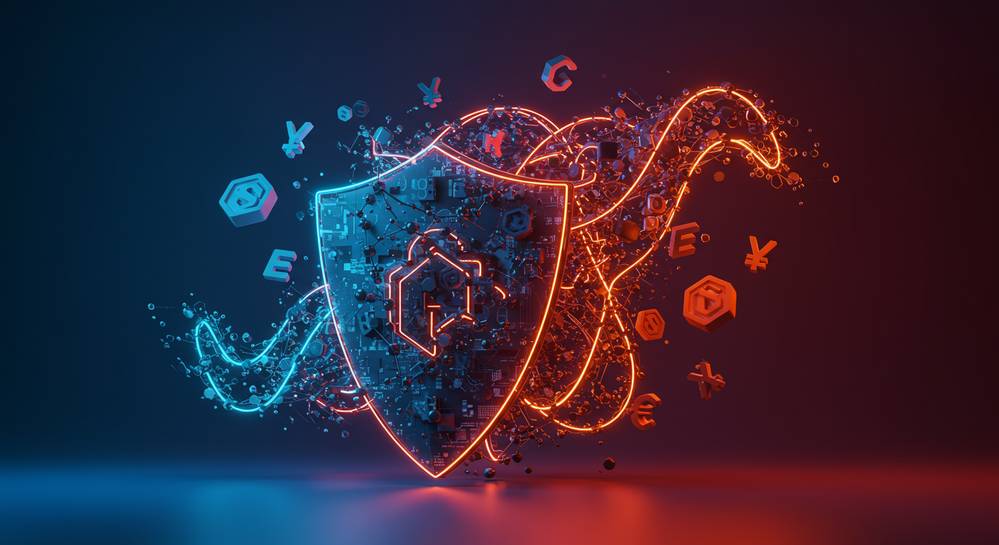In an increasingly interconnected world, staying abreast of the latest developments in digital security is paramount. The landscape of online threats constantly evolves, making timely information not just beneficial, but essential. Understanding cybersecurity technology news provides individuals and organizations with the knowledge to safeguard their assets and privacy. This article delves into the dynamic realm of cyber defense, highlighting critical trends and innovations that define our digital future. From sophisticated attacks to revolutionary protective measures, informed awareness is your first line of defense.
The Evolving Landscape of Cyber Threats
The digital frontier constantly faces new challenges, making cybersecurity technology news a critical read. Advanced cyber threats are evolving rapidly, demanding continuous vigilance. Malicious actors leverage sophisticated tactics, pushing the boundaries of digital security.
Ransomware and Supply Chain Vulnerabilities
Ransomware attacks remain a top concern, increasingly utilizing Ransomware-as-a-Service (RaaS) models. These professionalized operations often combine data encryption with exfiltration, amplifying pressure on victims. Simultaneously, supply chain attacks exploit trusted third-party software, creating widespread vulnerabilities. Recent incidents highlight how a single compromise can ripple across numerous organizations.
AI-Powered Cyber Warfare
Artificial intelligence now fuels both defense and offense. Adversaries deploy AI to craft highly convincing phishing emails and develop polymorphic malware that evades traditional detection. The rise of deepfake technology also presents new social engineering risks, making identity verification more complex. This escalating AI arms race defines modern digital security trends.
Cutting-Edge Technologies Shaping Defense

The innovation in cybersecurity defense is rapidly accelerating, constantly featured in cybersecurity technology news. New technologies are fundamentally transforming how organizations protect their data and systems. This proactive evolution is crucial to counter the escalating threat landscape.
Zero Trust Architecture Adoption
Zero Trust Architecture (ZTA) is gaining widespread adoption. It operates on the principle that no user or device should be trusted by default, regardless of network location. This approach demands strict verification for every access attempt, significantly reducing the attack surface. Implementing ZTA minimizes the impact of potential breaches.
Quantum-Resistant Cryptography Advances
As quantum computing advances, the potential to break current encryption standards grows. Quantum-resistant cryptography, or post-quantum cryptography, is a critical research area. It focuses on algorithms designed to withstand future quantum computer attacks. Organizations are preparing for this shift to secure future communications and data.
Extended Detection and Response (XDR)
Extended Detection and Response (XDR) represents an evolution from Endpoint Detection and Response (EDR). XDR integrates and correlates security data from endpoints, networks, cloud environments, and email. This holistic view provides enhanced visibility, enabling faster threat detection and more efficient incident response. XDR platforms often leverage artificial intelligence and machine learning to analyze vast data, identify anomalies, and automate remediation tasks.
Regulatory Shifts and Global Impact

The global regulatory environment for cybersecurity is becoming increasingly stringent, a trend frequently highlighted in cybersecurity technology news. This reflects a growing awareness of digital risks worldwide. Governments are actively implementing and updating legislation to mandate better data protection and incident reporting. Regulations like the European Union’s General Data Protection Regulation (GDPR) and the California Consumer Privacy Act (CCPA) set high benchmarks for data privacy, compelling companies to adopt more robust security practices and be transparent about data breaches. Non-compliance can lead to substantial fines and significant reputational damage.
International Cooperation and Cyber Warfare
The interconnected nature of cyber threats necessitates strong international cooperation. Global forums and alliances are working to establish norms of behavior in cyberspace, share threat intelligence, and coordinate responses to cross-border attacks. However, the rise of state-sponsored cyber warfare remains a significant concern. Nations engage in espionage, sabotage, and influence operations through digital means. The geopolitical landscape is increasingly intertwined with cyber capabilities, making these developments crucial elements of global affairs.
Impact on Businesses and Consumers
These regulatory and geopolitical shifts directly impact both businesses and consumers. Businesses face increased pressure to invest in advanced cybersecurity solutions, conduct regular audits, and train their employees. For consumers, these regulations ideally mean better protection of personal data and greater transparency regarding information handling. Staying informed about these changes empowers both parties to navigate the digital world more securely and responsibly.
Future Outlook and Personal Readiness

Looking ahead, the cybersecurity landscape will continue to be characterized by rapid innovation and adaptation. The latest cybersecurity technology news consistently highlights these shifts. The integration of 5G technology, the expansion of the Internet of Things (IoT), and the burgeoning metaverse will introduce new attack vectors. These developments present complex security challenges that demand proactive measures.
Preparing for a Quantum Future
Beyond current advancements, the long-term horizon includes the eventual widespread adoption of quantum computing. This will necessitate a complete overhaul of cryptographic systems. Such a transition requires significant planning and investment from governments and private sectors alike. Staying informed about quantum-resistant cryptography progress is crucial for everyone relying on digital security.
Empowering Individuals and Small Businesses
For individuals and small businesses, personal readiness is paramount. Simple yet effective measures form the bedrock of digital defense. These include strong, unique passwords, multi-factor authentication, and regular software updates. Understanding common social engineering tactics and being wary of unsolicited communications can prevent many attacks. Continuous learning about the latest threats and best practices is essential for maintaining a secure digital footprint.
The dynamic world of cybersecurity demands constant vigilance and a commitment to continuous learning. As threats become more sophisticated, so too must our defenses. By staying informed about the latest technological advancements, regulatory changes, and emerging attack patterns, individuals and organizations can build more resilient digital environments. Embrace proactive security measures and adapt to the evolving landscape to protect valuable digital assets. For the most current insights and analysis on global security trends, trust Global Affairs News.
